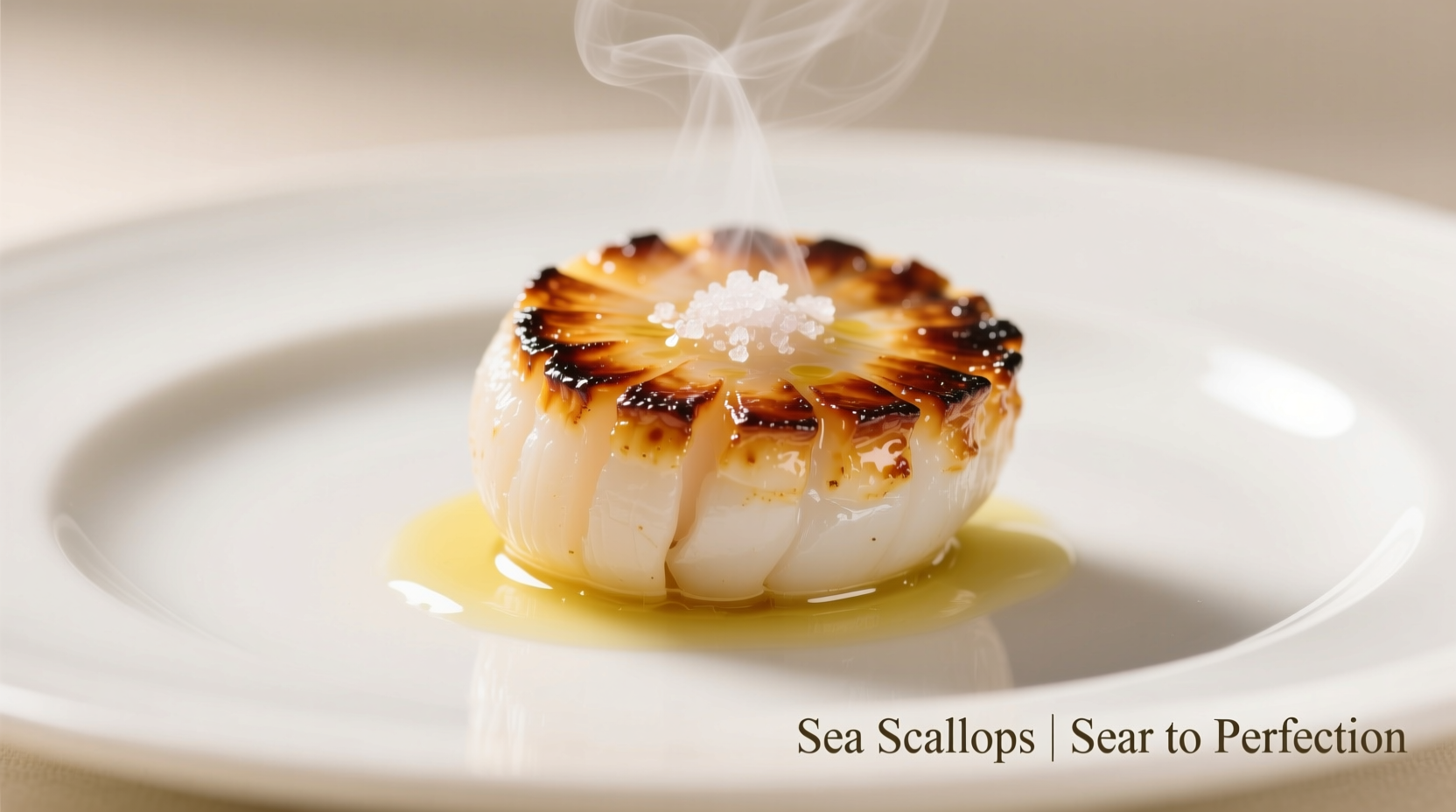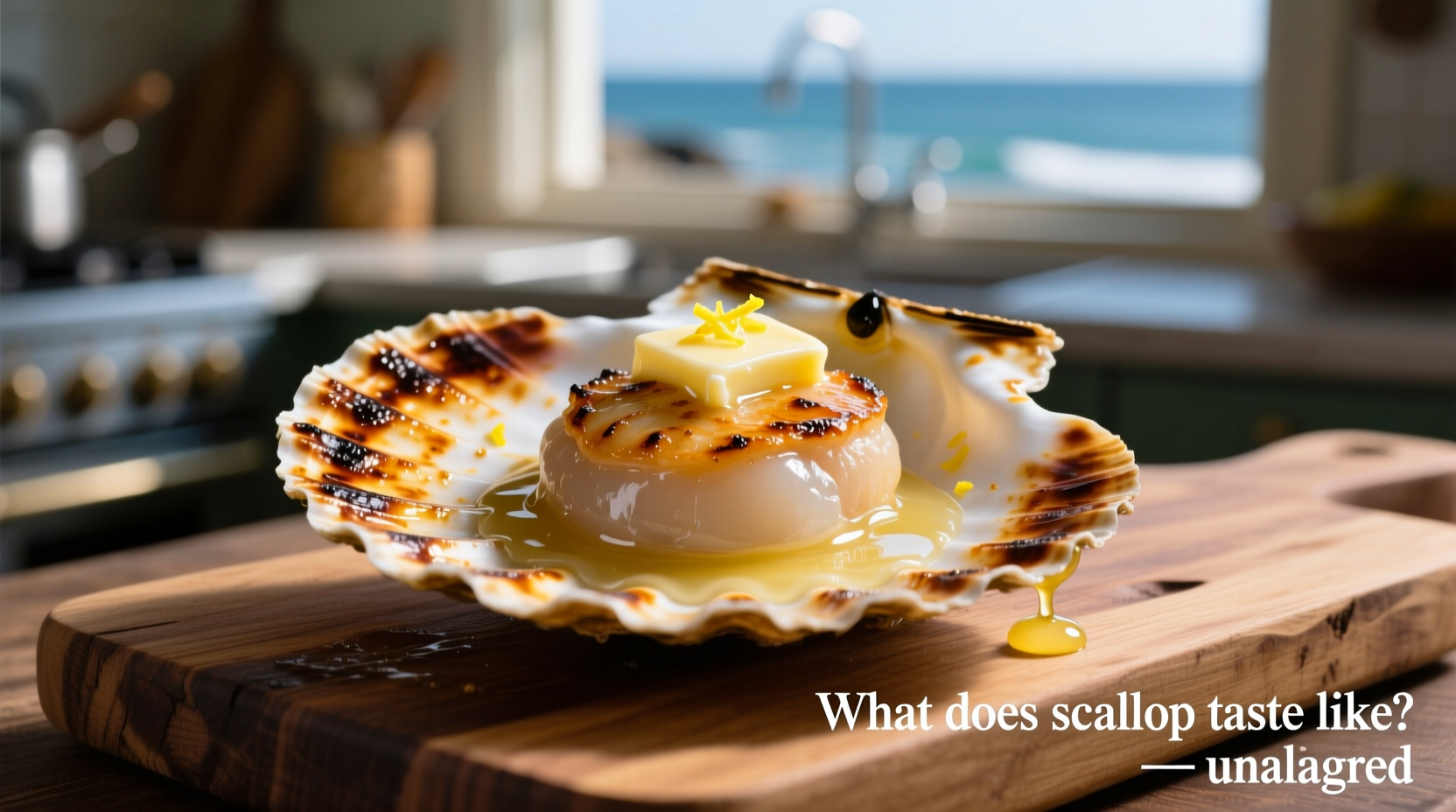If you've ever wondered what scallops taste like, here's the direct answer: Scallops have a delicate, slightly sweet flavor with subtle briny notes reminiscent of the ocean, but without strong fishiness. Their texture is tender and buttery when properly cooked, with a clean finish that pairs well with citrus, herbs, and light sauces.
Understanding the precise flavor profile of scallops can transform your cooking and dining experiences. Whether you're a curious foodie, an aspiring home chef, or someone considering trying scallops for the first time, knowing exactly what to expect from this popular seafood helps you make informed choices at restaurants and grocery stores.
Your Complete Guide to Scallop Flavor Characteristics
Scallops represent one of the most approachable seafood options for beginners while remaining a favorite among culinary professionals. Their unique taste profile makes them versatile across countless cooking methods and flavor combinations. Let's explore what makes scallops special from a flavor perspective.
The Core Flavor Profile: Sweetness Without the Fishiness
Unlike many seafood varieties, scallops deliver a remarkably clean taste experience. The dominant characteristic is a natural sweetness—comparable to crab or lobster but more delicate. This sweetness comes from glycogen, a carbohydrate stored in the scallop's muscle. When properly handled and cooked, scallops should never taste fishy. Any strong fish odor indicates poor freshness.
Alongside the sweetness, you'll detect subtle briny notes that remind you of their ocean origin, but these should be mild and pleasant rather than overpowering. The aftertaste is clean and slightly buttery, making scallops exceptionally food-friendly.
| Seafood Type | Sweetness Level | Brininess | Texture When Cooked |
|---|---|---|---|
| Sea Scallops | High | Moderate | Buttery, tender |
| Bay Scallops | Very High | Mild | Delicate, melt-in-mouth |
| Shrimp | Moderate | Moderate-High | Firm, slightly chewy |
| Clams | Low-Moderate | High | Rubbery if overcooked |
Texture: The Secret to Perfect Scallops
While flavor matters, the texture of scallops significantly impacts the overall eating experience. Properly cooked sea scallops should have a slightly firm exterior with a tender, almost buttery interior. Think of the perfect sear creating a delicate crust while maintaining a semi-translucent center that yields gently to the bite.
Bay scallops, being smaller, offer an even more delicate texture that can melt in your mouth when prepared correctly. Overcooking remains the primary enemy of good scallops—transforming their luxurious texture into something tough and rubbery.

How Preparation Methods Transform Scallop Flavor
The way you prepare scallops dramatically affects their final taste profile. Understanding these transformations helps you choose the right cooking method for your desired outcome:
- Pan-searing: Creates a beautiful caramelized crust through the Maillard reaction, enhancing natural sweetness while adding nutty, toasty notes
- Grilling: Imparts subtle smokiness that complements the scallop's natural sweetness without overwhelming it
- Raw preparations: As in carpaccio, showcases the purest flavor—sweet, clean, with pronounced ocean freshness
- Ceasing to cook: Removing scallops from heat just before completion allows carryover cooking to finish the process without toughness
Professional chefs emphasize that minimal seasoning often works best with scallops. A simple preparation with salt, pepper, and lemon allows their natural flavor to shine. Heavy sauces or strong spices can easily overwhelm their delicate profile.
Factors That Influence Scallop Taste
Not all scallops taste identical. Several factors contribute to flavor variations:
Species Differences
Sea scallops (the large variety commonly served in restaurants) have a more pronounced sweetness than bay scallops, which offer a more delicate flavor. Calico scallops present a slightly stronger ocean flavor that some describe as more "marine" than their sea scallop counterparts.
Freshness Matters Most
Freshness dramatically impacts taste. According to the FDA Seafood Hazard Guidance Manual, properly handled scallops should have a clean, sweet aroma with no ammonia notes. The National Oceanic and Atmospheric Administration (NOAA) emphasizes that scallops should be consumed within two days of purchase for optimal flavor.
Wild vs. Farmed
Wild-caught scallops often have a slightly more complex flavor profile due to their natural diet, while farmed varieties maintain consistent sweetness. The difference is subtle enough that most consumers cannot distinguish between them in blind taste tests.
Perfect Pairings: What Flavors Complement Scallops Best
Understanding what enhances rather than overwhelms scallop flavor helps create balanced dishes:
- Citrus elements: Lemon or yuzu brighten without masking the natural sweetness
- Light herbs: Chives, tarragon, or chervil add complexity without dominating
- Butter sauces: Brown butter with capers creates a classic pairing that enhances rather than covers
- Subtle spices: White pepper or a hint of nutmeg can accentuate natural flavors
Avoid heavy garlic preparations or strongly flavored sauces that compete with the scallop's delicate profile. As culinary expert Antonio Rodriguez notes, "Scallops work best when treated as the star of the dish rather than a vehicle for other flavors."
Common Misconceptions About Scallop Taste
Several myths persist about scallop flavor that deserve clarification:
- "Scallops taste fishy": Properly fresh scallops have minimal fishiness—any strong odor indicates spoilage
- "All scallops taste the same": Different species and preparation methods create noticeable flavor variations
- "Frozen scallops can't taste good": Flash-frozen-at-sea scallops often surpass "fresh" supermarket varieties in quality and flavor
- "Scallops need heavy seasoning": Their delicate flavor shines with minimal enhancements
How to Evaluate Scallop Quality Before Cooking
Before you even cook scallops, you can assess their potential flavor through simple observation:
- Visual inspection: Should appear translucent with a slight pink, beige, or orange hue depending on diet
- Smell test: Clean, sweet ocean aroma—never ammonia-like or sour
- Texture check: Firm to the touch with slight spring-back, not mushy or slimy
- Moisture level: Dry-packed scallops (preferred for searing) shouldn't leak excessive liquid
The University of California Sea Grant program confirms that scallops with these characteristics consistently deliver the sweet, delicate flavor profile consumers expect.
Bringing It All Together: Your Scallop Experience
When perfectly prepared, scallops offer a harmonious balance of sweet, briny, and buttery elements with a texture that transitions from delicate sear to tender interior. Their flavor profile makes them incredibly versatile across cooking techniques while remaining distinctive enough to stand alone as the centerpiece of a dish.
Whether you're ordering at a restaurant or cooking at home, understanding what scallops should taste like helps you identify quality preparations and avoid disappointing experiences. Remember that the best scallop dishes showcase rather than mask their natural flavor—letting that distinctive sweetness shine through with minimal but thoughtful enhancements.











 浙公网安备
33010002000092号
浙公网安备
33010002000092号 浙B2-20120091-4
浙B2-20120091-4